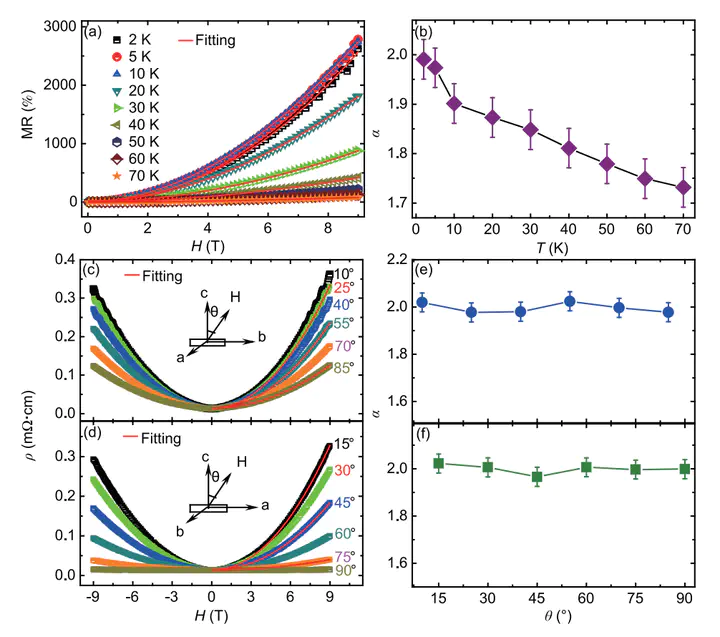Effects of temperature and magnetic field direction on the electron-hole compensation in WTe2

摘要
Tungsten ditelluride (WTe2) is a layered transition-metal dichalcogenide (TMD). The tungsten layers are clipped by adjacent chalcogenide layers. The sandwich structure stacks along the c-axis with Van Der Waals bonding between layers. Particularly, tungsten chains are formed along the a-axis within the dichalcogenide layers. WTe2 has attracted tremendous attention owing to its extremely large positive magneto-resistance {MR = [(ρH−ρ0)/ρ0]×100%} without saturation. Ali et al. found that WTe2’s MR reaches as large as 1.3×10 7% in a high magnetic field of 60 T at 0.53 K. The MR effect is believed to arise from the perfect compensation of electron and hole populations. In November 2014, Pletikosić et al. demonstrated that WTe2 possesses two pairs of electron and hole pockets with similar sizes through the angle resolved photoemission spectroscopy (ARPES) experiments. Subsequently, Cai et al. observed that the ratio between electrons and holes changes with increasing pressure, which leads to the decrease of its MR. However, the relationships between the electron-hole compensation mechanism and the temperature or magnetic field direction have not been researched. Therefore, in the present work, through a careful examination of the magnetic field dependent MR curves at different temperatures and magnetic field directions, the field dependent MR slightly deviates from an H2 behavior at high temperatures, but approaches to a pure H2 field dependence as the temperature is lowered. This result indicates that the electron-hole compensation improves with decreasing temperature. The MR exhibits a pure H2 dependence in various magnetic field directions at 2 K.